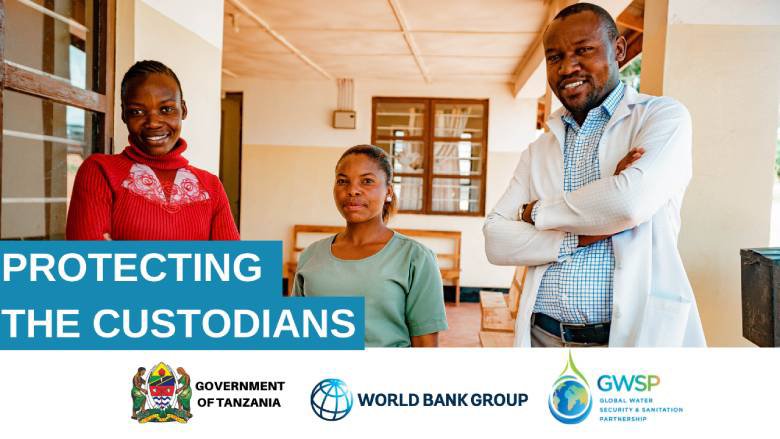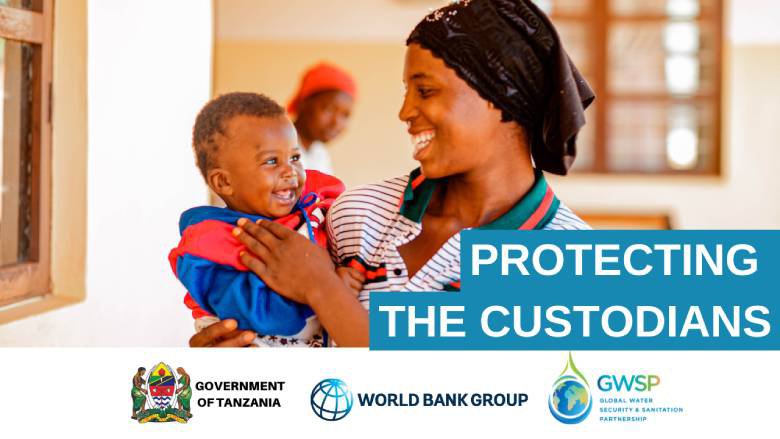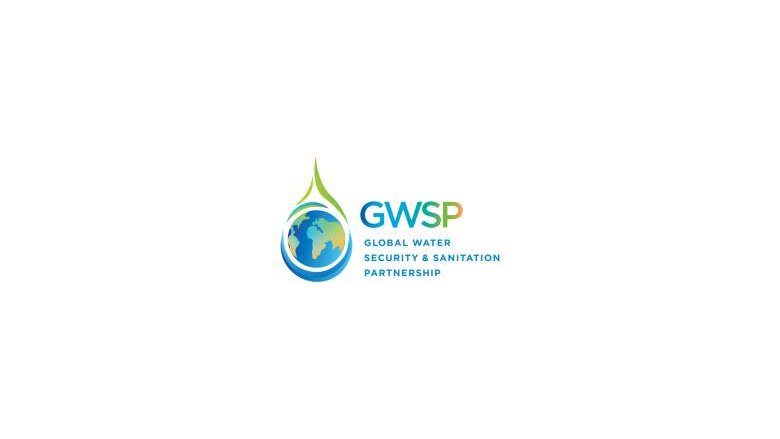In May of 2018, Dr. Ndavukai Larinyoni arrived at Itepula village in the southwestern region of Songwe. This was to be her new workstation as the doctor in charge of the village dispensary. She was transferring from St. Mary’s Dispensary, almost 700km away in the northern region of Manyara. Though both are remote locations, the most significant difference between the two was the fact that in Manyara, her dispensary had access to safe water supply and sanitation; Itepula did not.
“We had to queue for water along with the rest of the residents at the sole borehole, and if you were lucky to find the water flowing, the queue was always something to contend with. When the pump broke down, which was frequently, we had to go find water further out at unsafe shallow wells,” said Dr. Ndavukai. “We also had no toilets on site, so we would go to the village office to use their pit latrine.”
Dr. Ndavukai soon established a routine: She would wake up at 5:00 a.m. to collect water—about a kilometer from her house—and prepare for the needs of her two children at the time (she has three now, aged nine, five and one). Her target was to get to the dispensary by 6:00 a.m. every other day, when it was her turn to collect the four buckets of water that she and her nurse needed each workday; she would clean up the premises and open to start receiving her patients by 9.00 a.m.
“This was not something I had ever expected to experience in my life as a doctor,” said Dr Ndavukai. “It got harder during the early days of the COVID-19 pandemic when we required all our patients to wash hands before coming in. This increased our water usage so I would use my own money to hire help to fetch the water we needed. That is when I began despairing and considered requesting a relocation.”
She recalled the anticipation around the village when staff of the Rural Water Supply and Sanitation Agency (RUWASA) arrived in mid-2020 to survey the village and hold meetings with the residents. In October 2020, construction of the Itepula Village Water Scheme began and was completed and handed over to the village in December of that year. As priority institutions, the dispensary and the two schools in the village were connected immediately to the water supply scheme.
An Orphaned Sector
Following various sector analyses that brought to fore numerous factors that contributed to the continued lagging of the rural water supply and sanitation sector, the Government of Tanzania in 2019 moved to establish RUWASA, as the anchor of a new service delivery model focused on providing sustainable water in rural areas through resource mobilization, project implementation, capacity building, and operation and maintenance of projects with the active participation of major stakeholders.
RUWASA is providing new water supply services to villages like Itepula through the implementation of the $350 million Tanzania Sustainable Rural Water Supply and Sanitation Program (SRWSSP), which is financed by the International Development Association (IDA)*. Implemented since 2019, the SRWSSP’s development objective is to increase access to rural water supply and sanitation services in 86 participating districts in 17 administrative regions of the country and strengthen the capacity of sector institutions to sustain service delivery.
The SRWSSP is a Program for Results (PforR, or “results-based financing”) which is an effective instrument that creates new incentive frameworks for local institutions to deliver better quality and lasting services and institutionalizes good practices. Under this model, financing is disbursed according to results achieved and verified through the disbursement-linked indicators (DLIs) and independent verification mechanisms.
As a comprehensive sector-wide program, the SRWSSP has three result areas: sustainable access to improved water services in rural areas (‘Result Area 1’); increased access to improved sanitation services in rural areas (‘Result Area 2’) and strengthened capacity of sector institutions to sustain service delivery in rural areas (‘Result Area 3’). Result Area 1 is implemented by RUWASA, while Result Area 2 by the Ministry of Water (MOW), the Ministry of Health (MOH), and the Ministry of Education, Science and Technology (MOEST). Result Area 3 is implemented by the President’s Office-Regional Administration and Local Government (PO-RALG); as well as MOW, MOH, MOEST and RUWASA.
As part of the analyses done during program design, it was found that WASH promotion in schools and healthcare facilities has received limited attention, and 75 percent of schools lack a functional handwashing facility with available soap and water. Over half of health facilities report routine water shortages, which interferes with hygienic care.
Established in 2015, Itepula dispensary serves 4,500 residents, offering out-patient services (OPD), as well as delivery and reproductive and child health services. In a month, the OPD receives up to 200 patients and handles a maximum of 15 deliveries. Under the SRWSSP, in addition to attaining connection to the new village safe water scheme, the dispensary has also benefited from financing which supported the construction of six flush toilets with self-contained handwashing facilities, one bathroom and toilet for the delivery unit, and a handwashing station, together with a 5,000-liter storage tank. Per program requirements, all the new facilities must include a toilet for persons with disability, along with an accessibility ramp.
“It makes me happy to just be able to turn around in my chair and wash my hands at the tap here in my office after seeing a patient, as this is how it should be because we come into contact with our patients’ conditions,” said Dr Ndavukai. “But also, when we once had a particularly difficult case of postpartum hemorrhage, we were lucky to have had the few buckets of water that saved the day. Access to water is critical for delivering our services.”
Change by Example
Since the SRWSSP implementation started in 2019, 4.67 million people have gained access to improved sanitation, exceeding the program target of four million by July 2024. To date, the Program has also improved access to safe sanitation and hygiene facilities in 637 public primary schools and 873 health facilities and dispensaries. The SRWSSP targets providing sanitation facilities to 1,500 health facilities and dispensaries by the end of implementation in 2024. Program-supported sanitation facilities (for schools as well) consist of structures such as flush or pour-flush toilets – as a requirement where water is available – or ventilated improved pit latrines, or pit latrines with intact slabs or composting toilets, without leaks or overflow of the superstructure or containment structure. Structures are protected with walls and a door shutter to provide privacy and security for the user.



